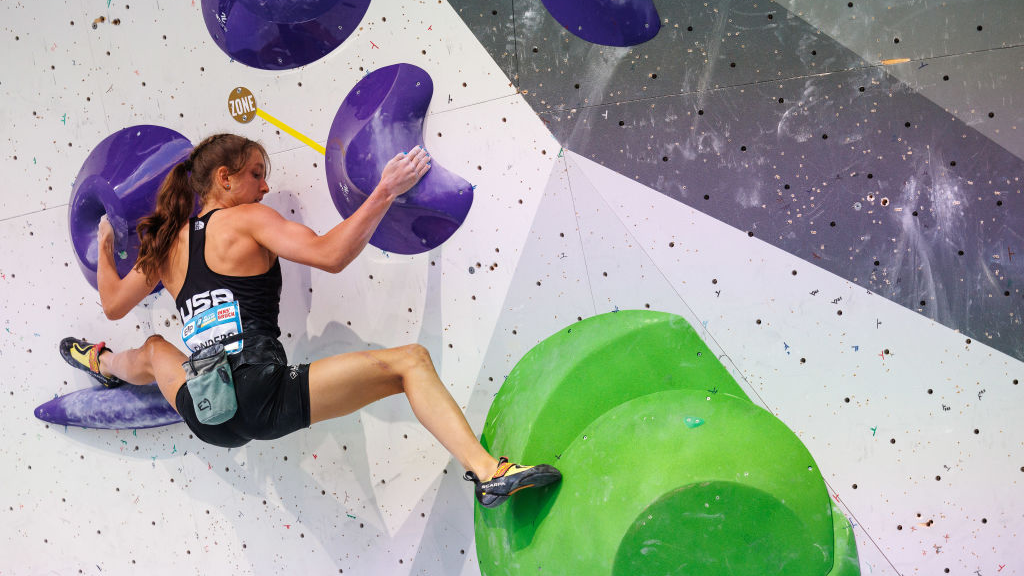How to dress for camping: your outdoor outfitting guide
Stumped on what to wear to camp? Check out our camping outfit ideas to help you pack light, camp comfortably and stave off temperature extremes

Wondering if you should go camping dressed in your best lumberjack chic with trendy flannel and pre-ripped jeans? Attired in your priciest hiking gear so everyone knows how outdoorsy you are? Or just slum it in sweatpants? Before you get overwhelmed with the endless sartorial possibilities, check out our camping outfit ideas that will help you pack light, camp comfortably and stave off temperature extremes so you can have the best time on your overnight adventures.
What should you not wear while camping?
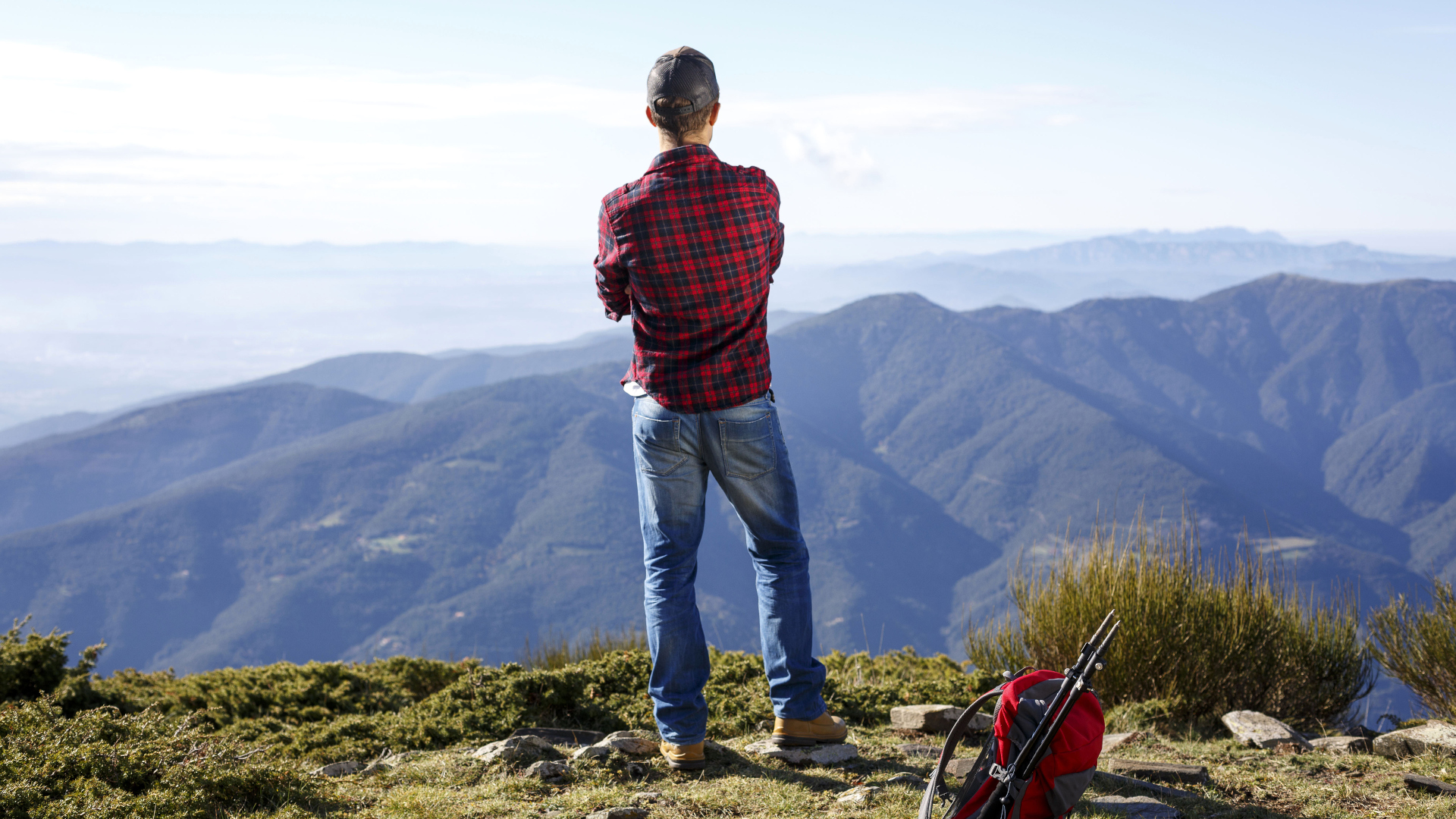
Though you can theoretically wear whatever you want when you go camping, it’s not the best place for a fashion parade – you’ve got the elements to contend with alongside other pests like mosquitos, poison ivy and campfire smoke – and you should definitely prioritize comfort and functionality over style.
Camping is a good time to leave your jeans and cotton t-shirts at home since they’re less than ideal when cold and wet, and don’t bother with strappy sandals or fashion shoes because campsites are enough of an obstacle course as things are. Finally, chances are you’ll be hanging out round the campfire at night and eating finger food in the dark, so don't bring clothes that you don’t want to end up covered in tiny burn marks or stains.
What to wear to camp
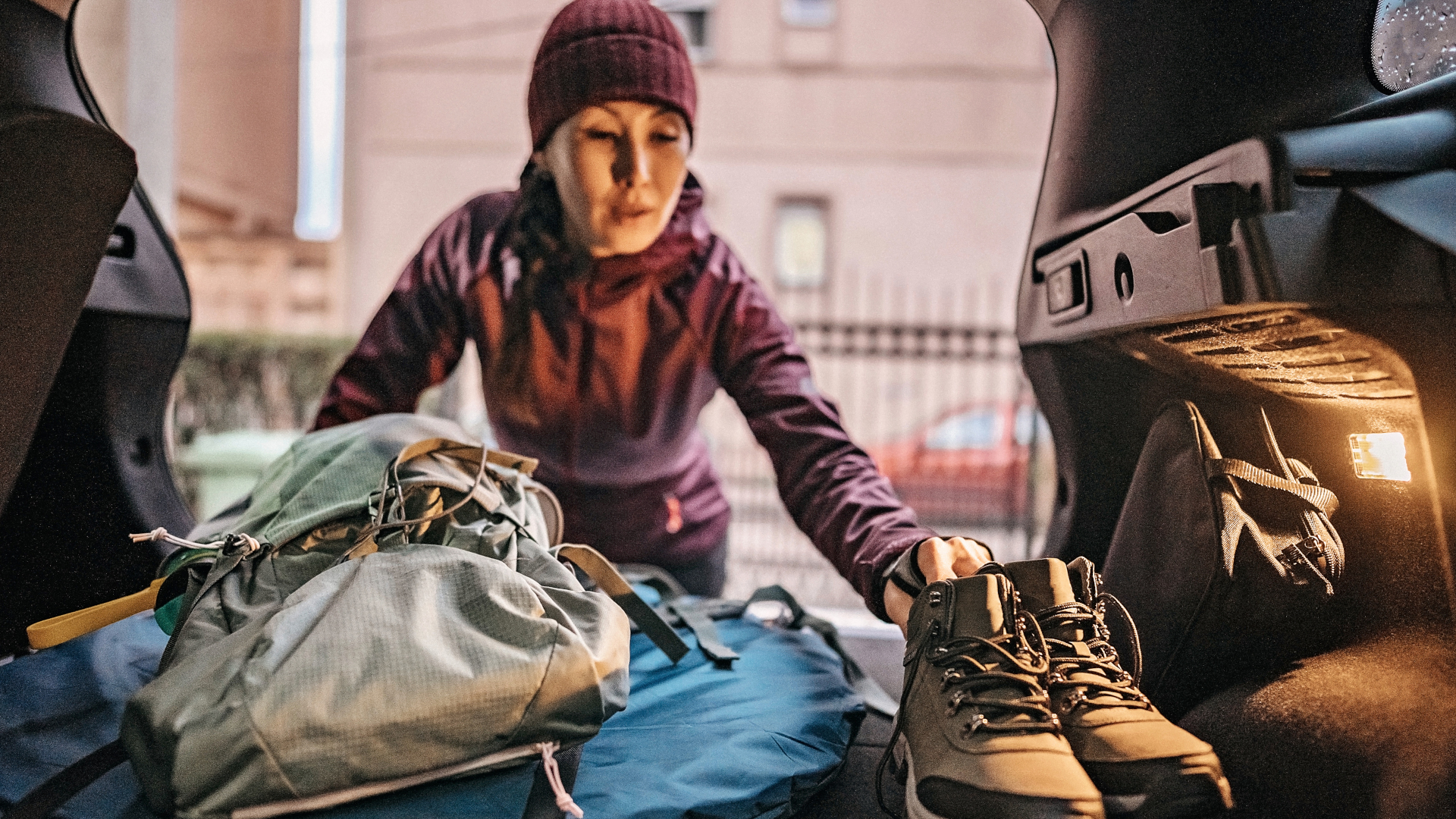
The key to packing for most camping trips is to plan for warmer days and cooler nights, but you don’t want to be rolling into camp with a suitcase large enough for a month abroad. Bring clothes that are versatile enough to be worn during your activities like hiking and climbing, but comfy enough for hanging out at camp later on.
You don’t want to be overheating when the sun is out but you should keep your skin protected from UV rays. You also need to be prepared for camping in the rain in case of inclement weather and you don’t want to get chilled at night which can happen if you’re not prepared, even when it’s warm during the day. So, start with breathable layers of clothing with good stretch that will dry quickly.
What to wear to camp: daytime clothing
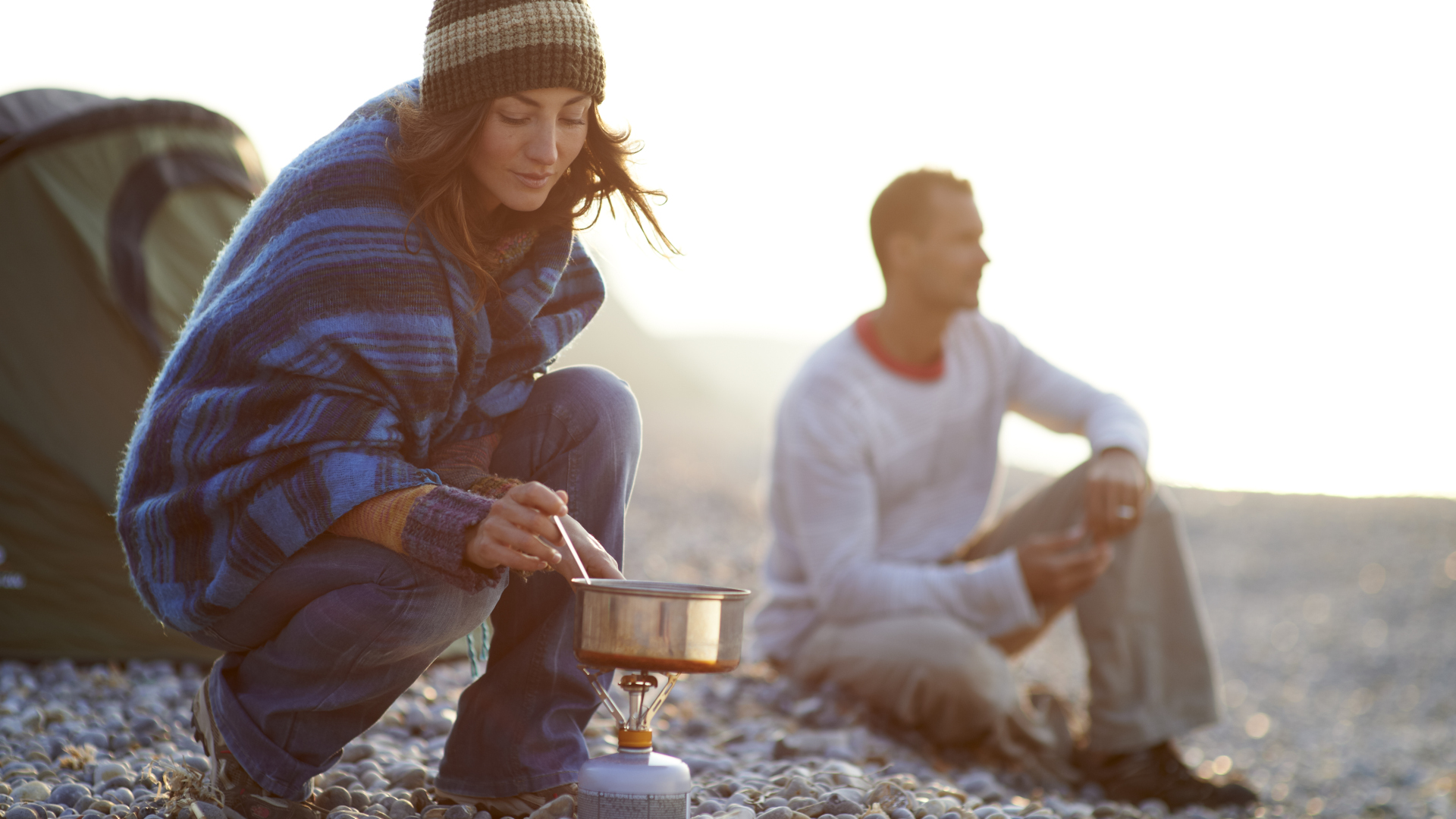
During the day, you might be working up a sweat hitting the hiking trails, going for a trail run or climbing at a nearby crag, but you don’t want to be changing your outfit between each activity. Our favorite clothes for camping can be worn on and off the trail, won’t get smelly and oftentimes your daytime outer layers will become inner layers after sunset.
- Lightweight breathable base layer: this can wick sweat without getting smelly and long sleeves provide sun protection, plus it can double as your undershirt after dark. If it’s just too hot for long sleeves during the day, bring a breathable (non-cotton) t-shirt instead.
- The best hiking pants: wear lightweight stretchy, breathable hiking pants with enough room to fit long johns underneath, or save room in your pack by wearing pants that convert into shorts, then you’ve got two outfits for the price of one.
- Walking sandals: particularly if you’re wearing hiking boots all day long, you’ll want to free your feet and get into some sandals when you get back to camp, but wear a sturdy pair for moving around on uneven ground. You’ll thank us when you have to get in and out of your tent to change or go to the bathroom in the middle of the night and don’t want to have to lace up your boots each time.
- Trail running shoes: a good in-between shoe to consider instead of bringing hiking boots and sandals are lightweight trail running shoes that you can hike in, wear comfortably around camp and aren’t a pain to pull on and off for nighttime bathroom breaks.
- Sun hat or visor: you can still get sunburned in winter, so regardless of the season bring something with a brim to keep the sun off your face.
- Rain wear: You don’t have to cancel your trip if the forecast calls for gray, but always bring a waterproof jacket in case things don’t go to plan, and consider waterproof trousers and wellies if things look bad.
- Water shoes: one of the best parts of camping is taking a dip in the river or lake, which is much easier when you have the grip of a good water shoe.
What to wear to camp: nighttime clothing
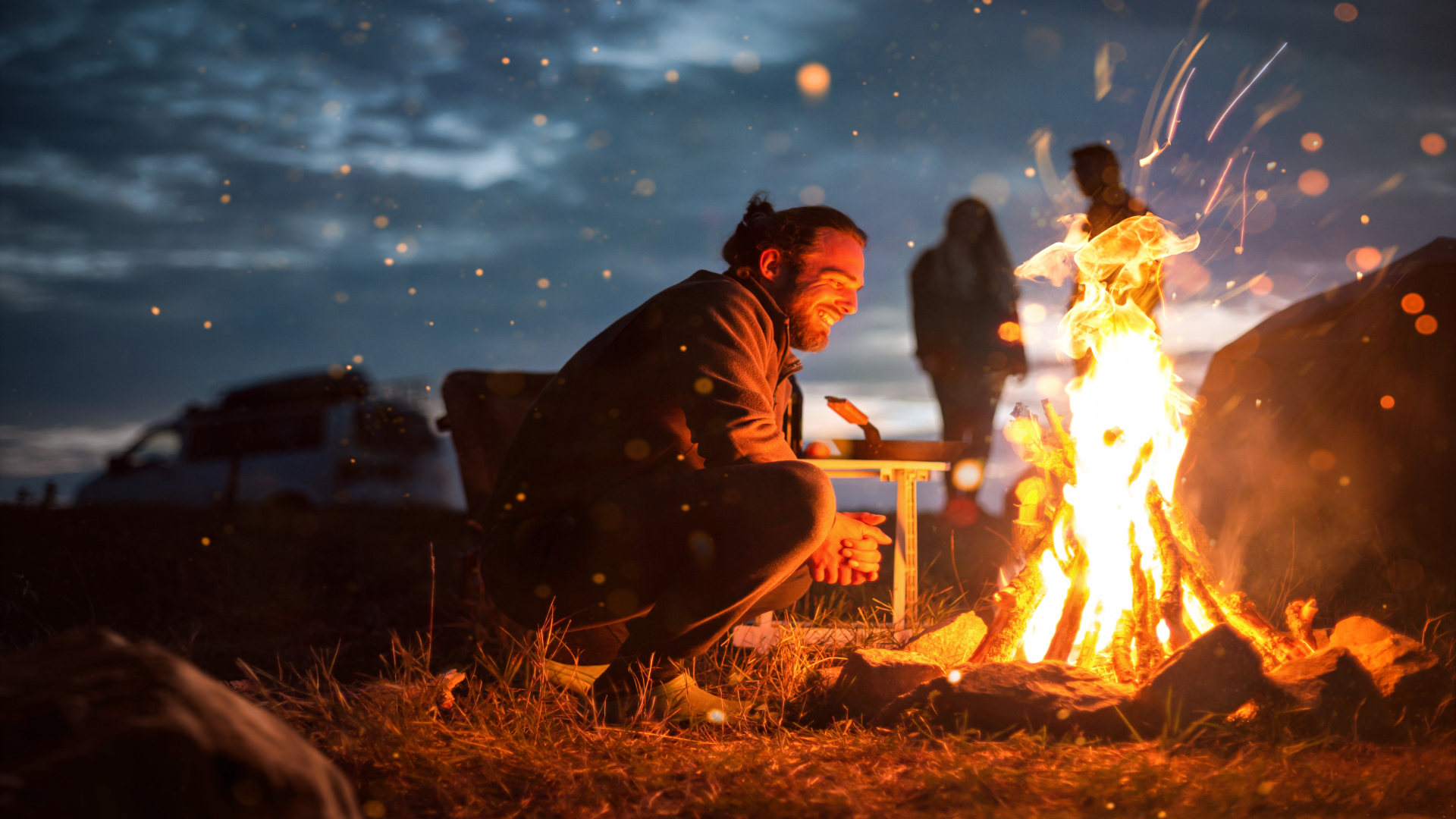
In virtually all camping scenarios, you’ll need extra clothes for nighttime and if you’re camping at higher elevations or desert camping, the difference between day and night time temperatures might be quite extreme. Remember you can keep your breathable layers from during the day on, but you’ll want to bring the following outer layers to pull on over them as needed.
Advnture Newsletter
All the latest inspiration, tips and guides to help you plan your next Advnture!
- Fleece jacket: in warmer climates, a fleece will be enough to keep you warm at night, plus these are a little more sturdy against branches and sparks from the fire than a down jacket.
- Down jacket: for high elevation and desert camping, you’ll be better off with the insulation of a down jacket, but remember it’s going to pick up campfire smoke and might get snagged on branches, so don’t bring your best one.
- Long underwear: bring some breathable long johns for underneath your hiking pants and possibly for sleeping in.
- Wool socks: wear fast drying wool socks for your daytime adventures and at night if it’s too cold for sandals, you don’t want to pull on the smelly socks you were wearing all day, so bring a thick pair of wool socks for night time. Check out our roundup of the best hiking socks if you need some new ones.
What do you wear to sleep in a tent?
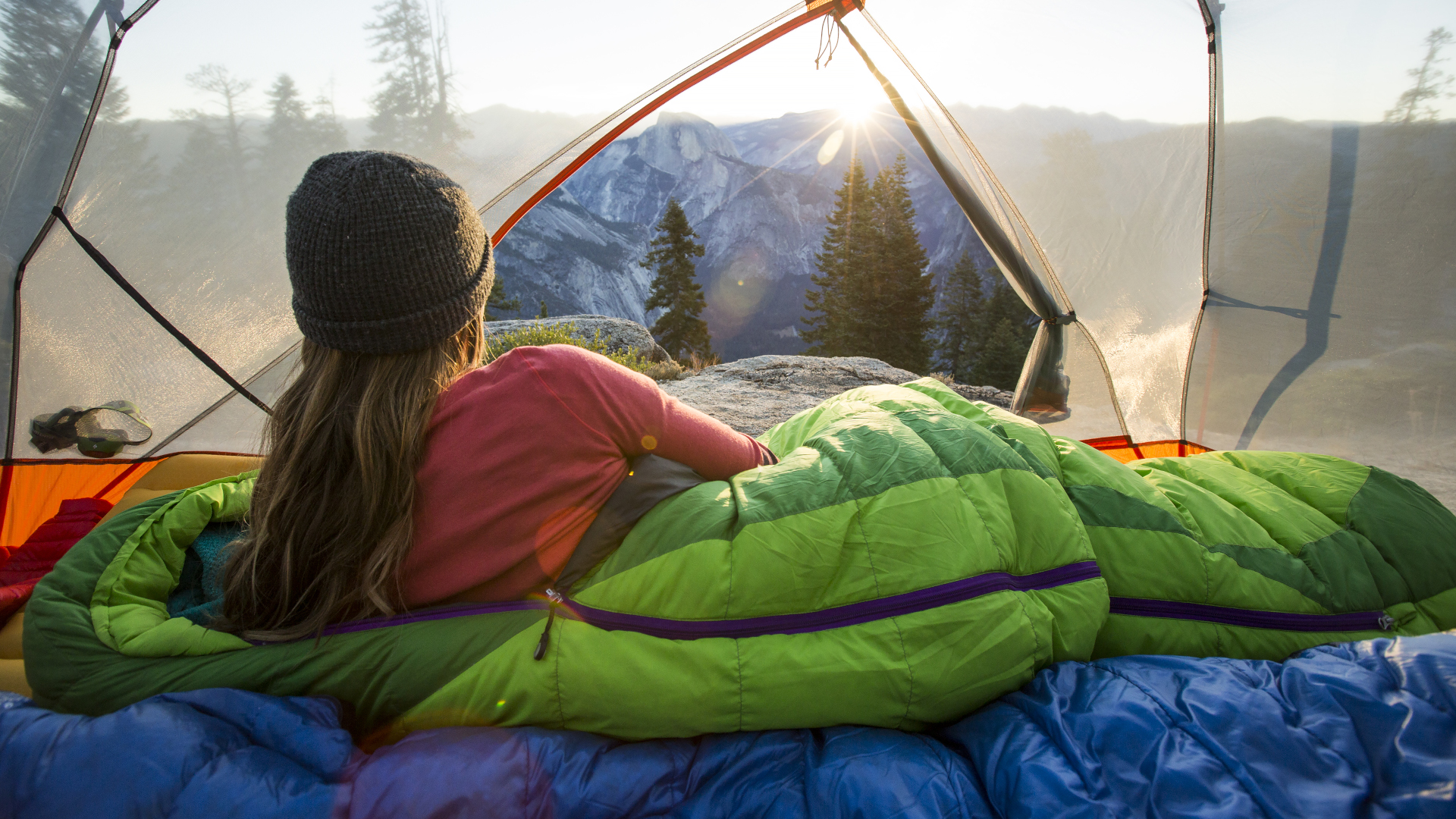
When the campfire fun comes to an end and it’s time to think about getting a good night’s sleep, what you wear once you’re inside your best sleeping bag largely depends on your personal preference, the outside temperature, and who else you might be sharing a tent with. Generally speaking though, you can sleep in your underwear or a breathable T-shirt if it’s warm, and if it’s cold you can strip down to your base layer and long johns.
Julia Clarke is a staff writer for Advnture.com and the author of the book Restorative Yoga for Beginners. She loves to explore mountains on foot, bike, skis and belay and then recover on the the yoga mat. Julia graduated with a degree in journalism in 2004 and spent eight years working as a radio presenter in Kansas City, Vermont, Boston and New York City before discovering the joys of the Rocky Mountains. She then detoured west to Colorado and enjoyed 11 years teaching yoga in Vail before returning to her hometown of Glasgow, Scotland in 2020 to focus on family and writing.

